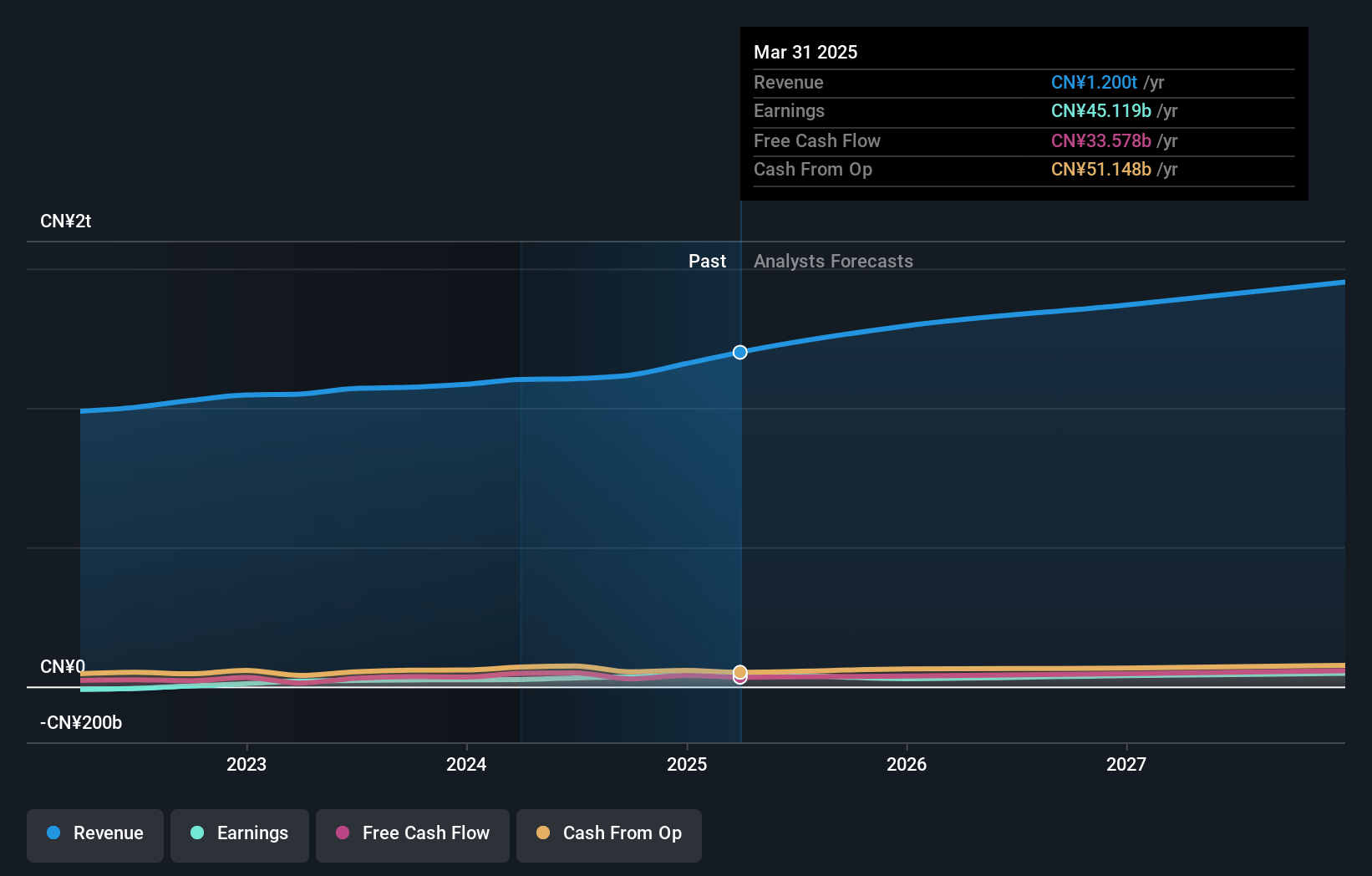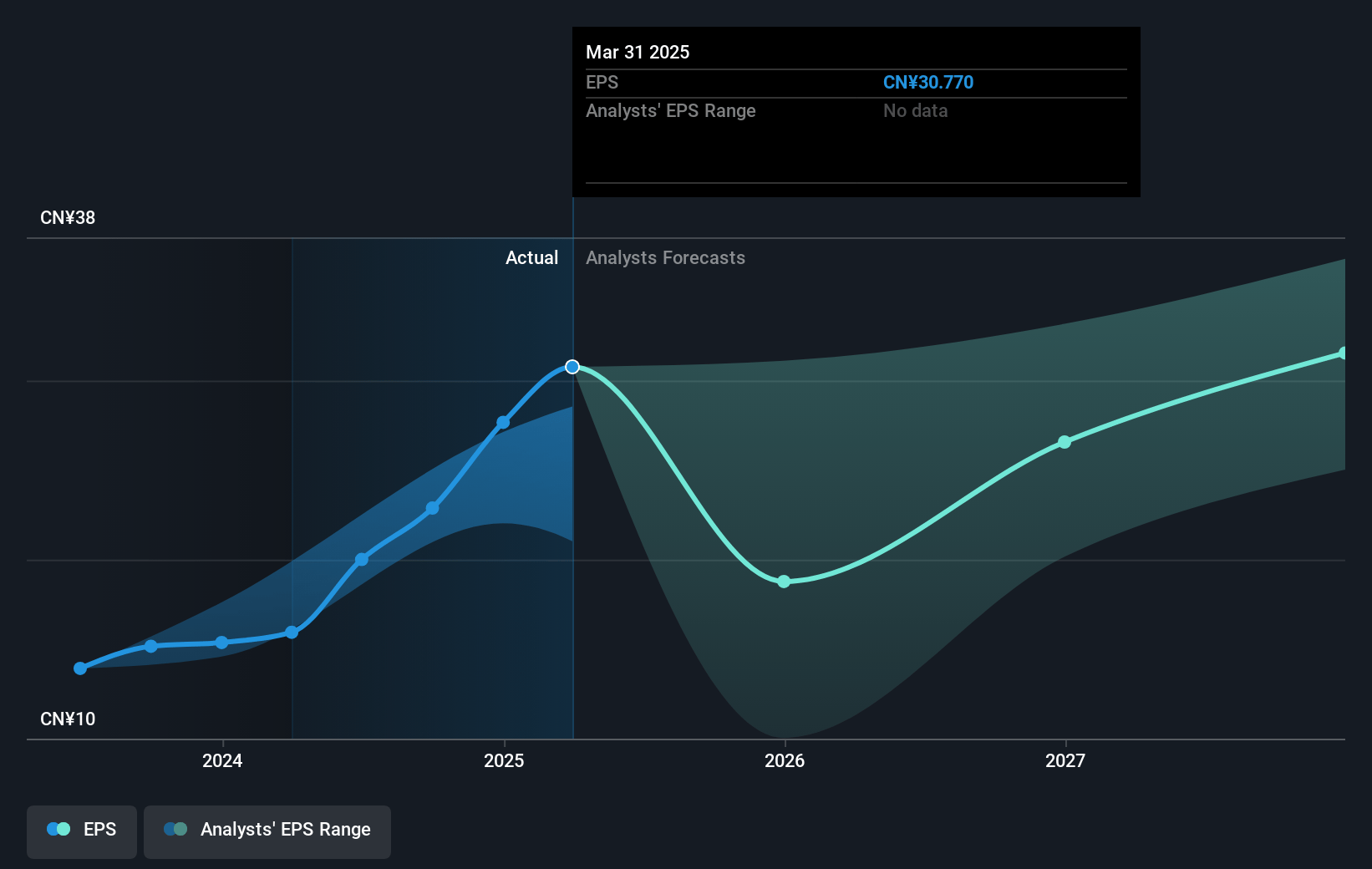Key Takeaways
- Strategic investments and AI tech aim to enhance efficiency, potentially driving growth but risking short-term earnings pressure and margin challenges.
- Expansion in supermarkets and lower-tier markets promises revenue growth but may limit margins due to competition and price sensitivity.
- Strategic emphasis on AI, market expansion, and new business adjustments might temporarily impact JD.com's margins and profitability amid growing market competition and government policy effects.
Catalysts
About JD.com- Operates as a supply chain-based technology and service provider in the People’s Republic of China.
- JD.com's strategic investments in user experience and supply chain efficiency are expected to drive future revenue growth and expand market share across key categories, but could also pressure margins if cost management does not keep pace with growth.
- The general merchandise category, particularly the supermarket segment, holds significant potential for long-term revenue growth due to operational improvements and enhanced supply chain capabilities, although significant competition might temper margin improvements.
- The company's expansion in lower-tier Chinese markets through more competitive pricing strategies could yield substantial revenue and customer base growth, but may be offset by narrower profit margins in these price-sensitive regions.
- JD's focus on leveraging AI and robotics technology is intended to optimize operating efficiency and reduce costs, potentially enhancing future net margins, though the upfront investment might weigh on short-term earnings.
- Recent government stimulus policies to boost consumption are expected to support JD's top-line growth, particularly in electronics and home appliances, however, any tapering of these policies could result in revenue growth deceleration and unmet aggressive projections.
JD.com Future Earnings and Revenue Growth
Assumptions
How have these above catalysts been quantified?- This narrative explores a more pessimistic perspective on JD.com compared to the consensus, based on a Fair Value that aligns with the bearish cohort of analysts.
- The bearish analysts are assuming JD.com's revenue will grow by 5.0% annually over the next 3 years.
- The bearish analysts assume that profit margins will shrink from 3.6% today to 3.4% in 3 years time.
- The bearish analysts expect earnings to reach CN¥45.5 billion (and earnings per share of CN¥31.52) by about April 2028, up from CN¥41.4 billion today. The analysts are largely in agreement about this estimate.
- In order for the above numbers to justify the price target of the more bearish analyst cohort, the company would need to trade at a PE ratio of 11.7x on those 2028 earnings, up from 8.5x today. This future PE is lower than the current PE for the US Multiline Retail industry at 15.0x.
- Analysts expect the number of shares outstanding to decline by 4.93% per year for the next 3 years.
- To value all of this in today's terms, we will use a discount rate of 9.24%, as per the Simply Wall St company report.
JD.com Future Earnings Per Share Growth
Risks
What could happen that would invalidate this narrative?- The declining revenues in the New Business segment, particularly due to Jingxi's business adjustments, may impact JD.com's future revenue growth and market expansion.
- The initiative in on-demand retail and food delivery services is still in the exploratory stage, and strategic and disciplined investments may affect the company's short-term profitability and non-GAAP net margins.
- The government stimulus policies that have stimulated growth in electronics and home appliances may create a challenging year-over-year growth comparison in the second half of 2025, potentially impacting future revenue and market share gains.
- JD.com faces competition in lower-tier markets as it expands its value-for-money product offerings, which may strain their gross margins if pricing pressures intensify.
- While JD is committed to leveraging AI and technology for cost optimization, the upfront resource allocation to these technological advancements may temporarily compress operating margins or net margins in the near term before benefits are realized.
Valuation
How have all the factors above been brought together to estimate a fair value?- The assumed bearish price target for JD.com is $45.14, which represents one standard deviation below the consensus price target of $53.68. This valuation is based on what can be assumed as the expectations of JD.com's future earnings growth, profit margins and other risk factors from analysts on the more bearish end of the spectrum.
- However, there is a degree of disagreement amongst analysts, with the most bullish reporting a price target of $70.18, and the most bearish reporting a price target of just $30.49.
- In order for you to agree with the bearish analysts, you'd need to believe that by 2028, revenues will be CN¥1340.7 billion, earnings will come to CN¥45.5 billion, and it would be trading on a PE ratio of 11.7x, assuming you use a discount rate of 9.2%.
- Given the current share price of $33.56, the bearish analyst price target of $45.14 is 25.7% higher.
- We always encourage you to reach your own conclusions though. So sense check these analyst numbers against your own assumptions and expectations based on your understanding of the business and what you believe is probable.
How well do narratives help inform your perspective?
Disclaimer
AnalystLowTarget is an employee of Simply Wall St, but has written this narrative in their capacity as an individual investor. AnalystLowTarget holds no position in NasdaqGS:JD. Simply Wall St has no position in the company(s) mentioned. Simply Wall St may provide the securities issuer or related entities with website advertising services for a fee, on an arm's length basis. These relationships have no impact on the way we conduct our business, the content we host, or how our content is served to users. This narrative is general in nature and explores scenarios and estimates created by the author. The narrative does not reflect the opinions of Simply Wall St, and the views expressed are the opinion of the author alone, acting on their own behalf. These scenarios are not indicative of the company's future performance and are exploratory in the ideas they cover. The fair value estimate's are estimations only, and does not constitute a recommendation to buy or sell any stock, and they do not take account of your objectives, or your financial situation. Note that the author's analysis may not factor in the latest price-sensitive company announcements or qualitative material.







